 In this part of my review I will talk about the components of Descent 2nd edition and a little about their rules. This will make me able to focus on the gameplay and overall review of the game in the next part.
In this part of my review I will talk about the components of Descent 2nd edition and a little about their rules. This will make me able to focus on the gameplay and overall review of the game in the next part.It's worth mentioning that I never played 1st edition, even though it was on my shopping list for over 2 years I just never got around to buying it.
I would thus love to learn from about the differences between the two editions from 1st edition players, so if you want to share something post it in the comments!
 First of all, before I begin, let's talk briefly about storage. The box is fairly small for a game with as many components as you get - and the box is poorly suited to handle the amount of stuff once you have punched the tokens and tiles the cardboard insert becomes worthless. The easiest, and perhaps best (though not the prettiest) way to store you stuff is to get hold of zip bags and divide each component category between them. This allows you to store everything in a "pile" but at the same time being able to quickly setup a game as everything will be separated. This is at least the way I'm doing it. I figure, that once expansions start being released this problem will partially solve itself and you will be able to use the expansion boxes to store additional content from the core game.
First of all, before I begin, let's talk briefly about storage. The box is fairly small for a game with as many components as you get - and the box is poorly suited to handle the amount of stuff once you have punched the tokens and tiles the cardboard insert becomes worthless. The easiest, and perhaps best (though not the prettiest) way to store you stuff is to get hold of zip bags and divide each component category between them. This allows you to store everything in a "pile" but at the same time being able to quickly setup a game as everything will be separated. This is at least the way I'm doing it. I figure, that once expansions start being released this problem will partially solve itself and you will be able to use the expansion boxes to store additional content from the core game.

 But enough about that. Let's begin with the campaign book, it's very well put together book that includes a total of 20 quests, 16 of them are divided into 2 parts, or "encounters" as the game calls it. Usually this means that encounter 1 takes place on a outdoors location, and encounter 2 takes place somewhere indoors. For instance, the first real quest "Fat Goblin" (sounds like a Mobster name for a fantasy character), starts out with the heroes having to protect a small farm from Goblin raiders, and once that encounter ends the story progresses with the heroes chasing after the Goblin raiders back to their lair, where the second encounter takes place.
But enough about that. Let's begin with the campaign book, it's very well put together book that includes a total of 20 quests, 16 of them are divided into 2 parts, or "encounters" as the game calls it. Usually this means that encounter 1 takes place on a outdoors location, and encounter 2 takes place somewhere indoors. For instance, the first real quest "Fat Goblin" (sounds like a Mobster name for a fantasy character), starts out with the heroes having to protect a small farm from Goblin raiders, and once that encounter ends the story progresses with the heroes chasing after the Goblin raiders back to their lair, where the second encounter takes place. 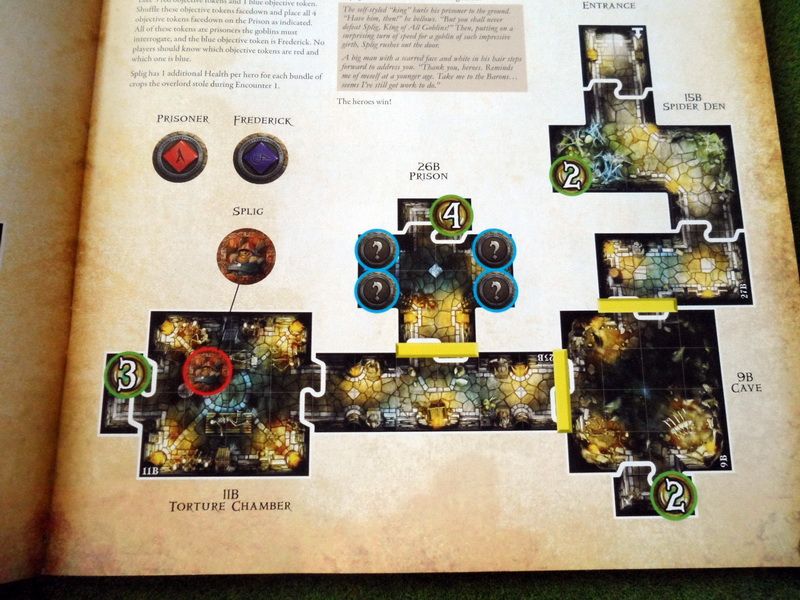 Each encounter has its own special rules, some include boss characters and they often have a couple of predetermined monster types and a so called "open group" which essentially means that the "Overlord"/dungeon master, is able to pick a monster type that matches the environmental icons (woods, caves, ruins and so on).
Each encounter has its own special rules, some include boss characters and they often have a couple of predetermined monster types and a so called "open group" which essentially means that the "Overlord"/dungeon master, is able to pick a monster type that matches the environmental icons (woods, caves, ruins and so on).The game comes with a quest log pad, where the heroes can keep track of their items, shared gold, skills and experience points - and the Overlord can keep track of his experience points as well. On the back of this campaign sheet there is an overview of the entire campaign where players keep track of their victories or defeats. The campaign is divided into 2 acts, each with 3 scenarios, an interlude and a finale. You won't play through all scenarios on your first game, because the act 2 scenarios are determined by who won each act 1 scenario. For instance, if the heroes win the first quest "The Fat Goblin", they will be playing the Frozen Spire as their first act II scenario. Should the Overlord win "The Fat Goblin" the first act 2 scenario will instead be "the Monster's Hoard". It's a small feature but I think it’s a nice touch adding replay value and a bit more depth to the campaign.
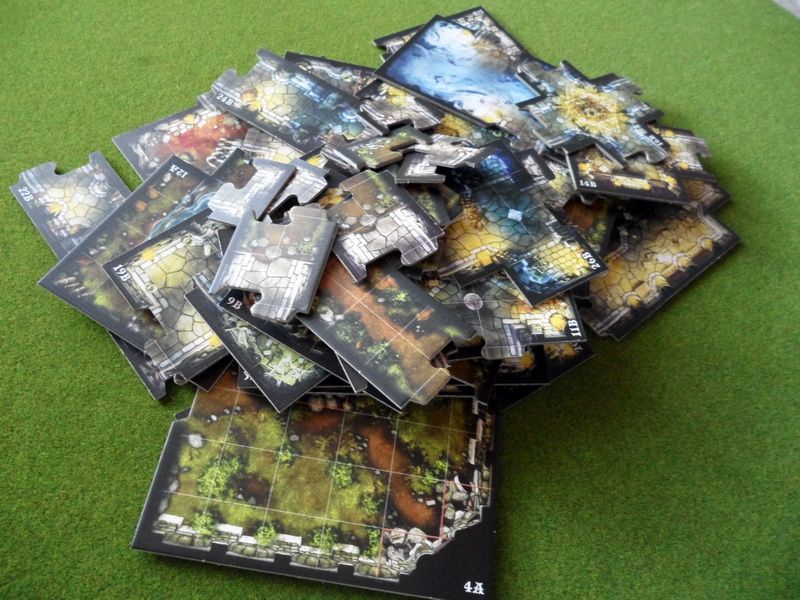 The tiles are very nice; they have this puzzle piece interlocking system. You only have to be gentle when putting them together and even more when picking them apart not to damage anything as they fit quite tightly. There are quite a lot of tiles; most encounters are but a small area so you never really use all tiles at any one time. There are some large quests in the game, and you could always write your own quests if you really want to use all tiles. The front of all tiles has outdoor locations printed on them while the back of the tiles have indoor locations.
The tiles are very nice; they have this puzzle piece interlocking system. You only have to be gentle when putting them together and even more when picking them apart not to damage anything as they fit quite tightly. There are quite a lot of tiles; most encounters are but a small area so you never really use all tiles at any one time. There are some large quests in the game, and you could always write your own quests if you really want to use all tiles. The front of all tiles has outdoor locations printed on them while the back of the tiles have indoor locations. The tiles are supposedly smaller than in Descent 1st edition, according to one of the guys at my club who played 1st edition a lot. But this is not 100% confirmed yet so I can't say for sure if they fit or not with the old Descent 1st edition tiles.
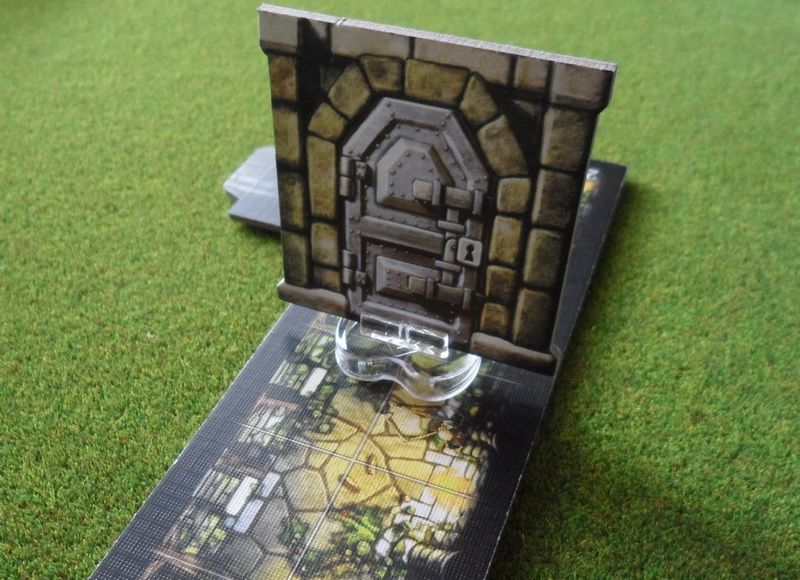
 There are a few door stands representing locked and unlocked doors.
There are a few door stands representing locked and unlocked doors.There are 8 characters in the game, divided amongst 4 RPG archetypes. Each archetype also has to pick from one of two available classes to specialize himself. This makes it possible to have a completely different experience with the same character when playing a different class in a new campaign. Each character card has two sides, basically the same, but one side has a "once per encounter" special power - when used you flip your card over. The stats in the game are "movement", "health", "stamina" and "defense". Each character also have 4 attributes of varied proficiency, these are Awareness, Might, Knowledge and Willpower. Whenever you test something in the game you usually test your attributes, while the stats provide active and changing information about your character status that you use each turn.
There is a ton of fatigue (gained by spending stamina) and health tokens.
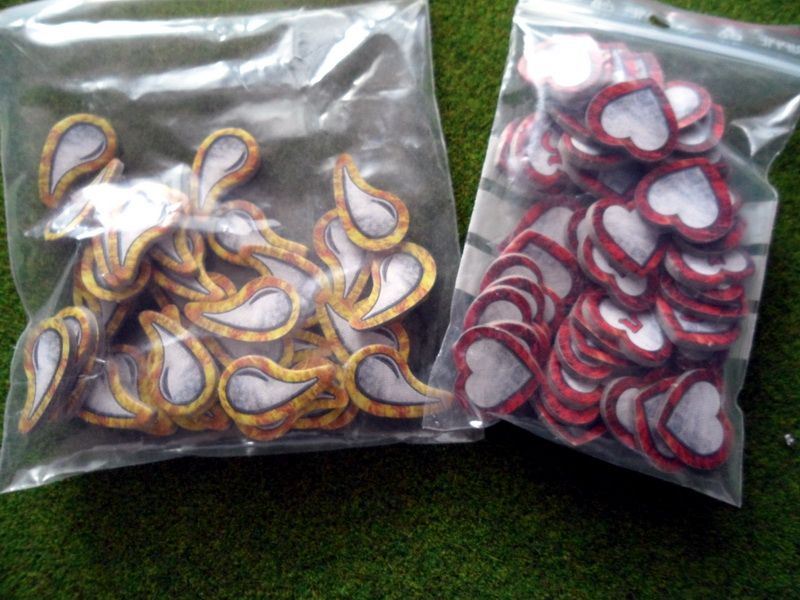 There are also search tokens that for the most part result in minor treasures being found during the quest, such as potions. What you find is determined by your "search deck". The cards in the search deck have items that are discarded when the quest is over, as well as a "gold value" which yields that much gold to the adventurers at the end of the quest. One of the search tokens is special, in some scenarios there is a one quest related of a kind item of great importance that can be discovered by searching the area.
There are also search tokens that for the most part result in minor treasures being found during the quest, such as potions. What you find is determined by your "search deck". The cards in the search deck have items that are discarded when the quest is over, as well as a "gold value" which yields that much gold to the adventurers at the end of the quest. One of the search tokens is special, in some scenarios there is a one quest related of a kind item of great importance that can be discovered by searching the area.You also get "condition" tokens that mark special conditions on monsters, and condition cards that are applied to characters. These include Poisoned, Stunned, Immobilized and Diseased.
 The monster and character miniatures are quite nice. I really like that the characters are "in scale" with each other. Which means that the Halfling and dwarf character is smaller than the rest of the heroes. It's not like in D&D: Wrath of Ahsardalon where the Dwarf (beside being a female!) looks like a huge Barbarian. The monsters cover 9 monster types, each with a "master" (red) and "minion" (tan) version.
The monster and character miniatures are quite nice. I really like that the characters are "in scale" with each other. Which means that the Halfling and dwarf character is smaller than the rest of the heroes. It's not like in D&D: Wrath of Ahsardalon where the Dwarf (beside being a female!) looks like a huge Barbarian. The monsters cover 9 monster types, each with a "master" (red) and "minion" (tan) version.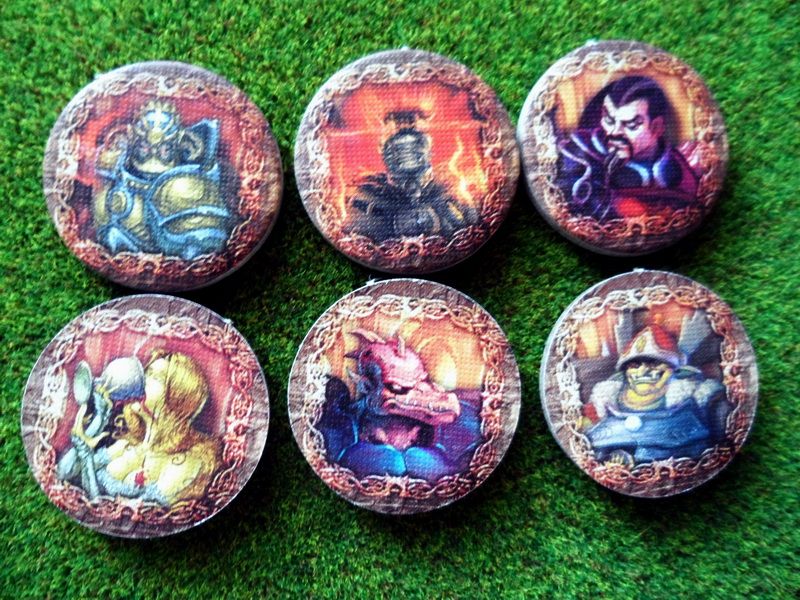 As I mentioned in my previous post about this game, the Lieutenants (boss monsters) aren't represented with miniatures but with tokens instead. Looking at the price over at FFG store - I won't be paying 10 USD per miniature. And while it may suck to not be able to represent these characters properly I rather get the game at a more affordable price than fork over another 20-40 USD if that is what it would have cost to include them in the box. The price was one of the things that actually made me finally pick this game up from the shelves.
As I mentioned in my previous post about this game, the Lieutenants (boss monsters) aren't represented with miniatures but with tokens instead. Looking at the price over at FFG store - I won't be paying 10 USD per miniature. And while it may suck to not be able to represent these characters properly I rather get the game at a more affordable price than fork over another 20-40 USD if that is what it would have cost to include them in the box. The price was one of the things that actually made me finally pick this game up from the shelves.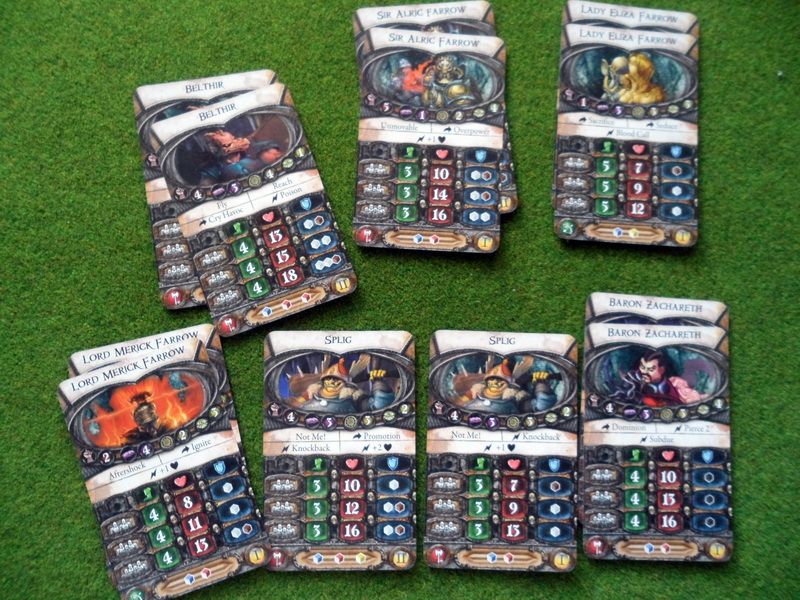 Monsters and Lieutenants each have their individual stat cards (for each class of monsters). These stat cards cover the stats for the monster during Act I and Act II quests. Monsters and bosses become tougher in Act II. Thus the game scales its own difficulty. There is also a difficulty scaling incorporated on the cards where the amount of monsters and the amount of Minion/Master monsters is determined by the number of heroes taking part in the quest.
Monsters and Lieutenants each have their individual stat cards (for each class of monsters). These stat cards cover the stats for the monster during Act I and Act II quests. Monsters and bosses become tougher in Act II. Thus the game scales its own difficulty. There is also a difficulty scaling incorporated on the cards where the amount of monsters and the amount of Minion/Master monsters is determined by the number of heroes taking part in the quest.Another feature that I like is that you start each quest in the town of Arhynn, and have to travel to each quest on a campaign map. This is just a small "tiny-mini game" that involves drawing random encounter cards along the way, that may help the heroes or aid the Overlord. it's a nice addition and even though you don't have "battle encounters" it still feels like something you would expect to find in PC RPG games such as "Baldur’s Gate" which I grew up on.
 The Overlord just like the heroes has a deck of his own. But this consists of 15 basic Overlord cards that the Overlord draws from at the start of each of his turns, and these cards usually boost monsters, attack heroes with traps or throw in game effects that favor the overlord. I interpret this mechanic to actually represent stuff like "critical hits" and hidden traps without having to physically represent them on the board or without getting too bogged down in special rules for each monster. I will talk more about the Overlord cards in the next part of this review.
The Overlord just like the heroes has a deck of his own. But this consists of 15 basic Overlord cards that the Overlord draws from at the start of each of his turns, and these cards usually boost monsters, attack heroes with traps or throw in game effects that favor the overlord. I interpret this mechanic to actually represent stuff like "critical hits" and hidden traps without having to physically represent them on the board or without getting too bogged down in special rules for each monster. I will talk more about the Overlord cards in the next part of this review.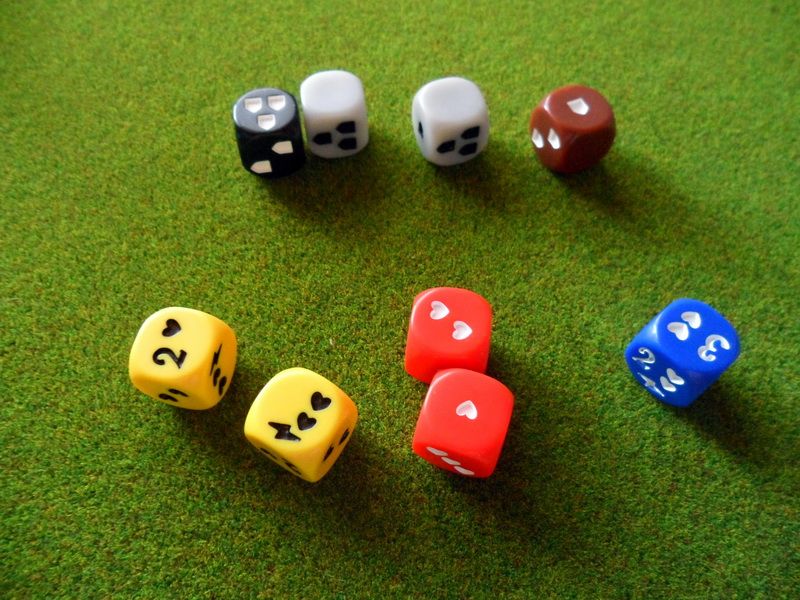
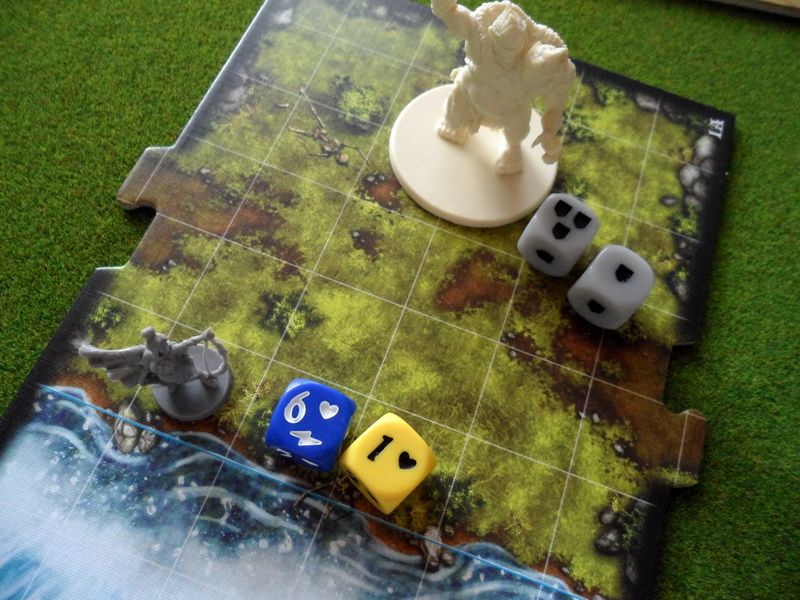 Finally we have the ugly dice. The dice mechanic in this game is really to my liking. It combines things like damage/special attacks/range of attacks in one roll. The dice are used for numerous things, obviously for all attack and defense rolls. You roll dice that match the color marked on your weapons. Each heart you score equals 1 point of health loss on the target model. The target models rolls defense dice corresponding his "defense value" shown on his profile card. Each shield negates a point of damage. Numbers indicate the range of ranged attacks in that particular roll, if you don't have arranged weapon simply disregard the number and focus on the other symbols. There is also the flash symbol, which causes a "surge". A "surge" is a special attack or ability that is triggered whenever a flash comes up on the roll. Monsters and heroes can often choose what effect they want to trigger as all special effects require a flash symbol, but players are free to pick which of their special abilities are best suited for this particular roll. I will talk more about special attacks and "surges" in the next part of the review.
Finally we have the ugly dice. The dice mechanic in this game is really to my liking. It combines things like damage/special attacks/range of attacks in one roll. The dice are used for numerous things, obviously for all attack and defense rolls. You roll dice that match the color marked on your weapons. Each heart you score equals 1 point of health loss on the target model. The target models rolls defense dice corresponding his "defense value" shown on his profile card. Each shield negates a point of damage. Numbers indicate the range of ranged attacks in that particular roll, if you don't have arranged weapon simply disregard the number and focus on the other symbols. There is also the flash symbol, which causes a "surge". A "surge" is a special attack or ability that is triggered whenever a flash comes up on the roll. Monsters and heroes can often choose what effect they want to trigger as all special effects require a flash symbol, but players are free to pick which of their special abilities are best suited for this particular roll. I will talk more about special attacks and "surges" in the next part of the review.The blue die has an X on it. All attacks include the blue die, and when the X comes up it simply means a "critical fail to hit" has occurred and your attack completely misses the target and the action is lost.
Some of the other minor components, quest tokens, player tokens, unique campaign related items, villager tokens and finally shop cards for Act I and Act II.
Check back again tomorrow for my review of the the gameplay and my final thoughts about Descent 2nd edition.
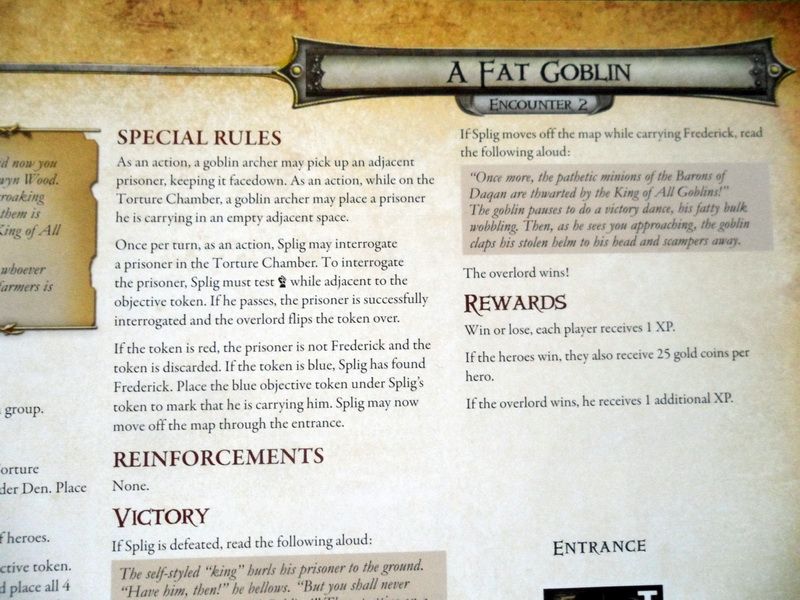
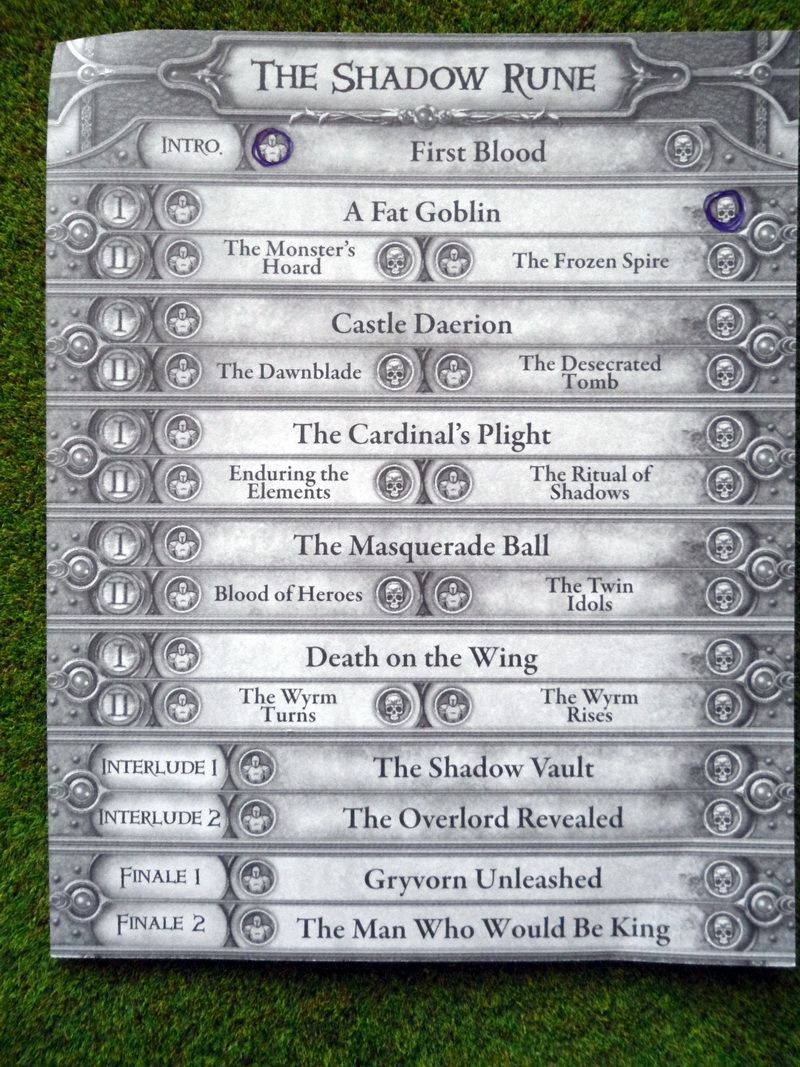

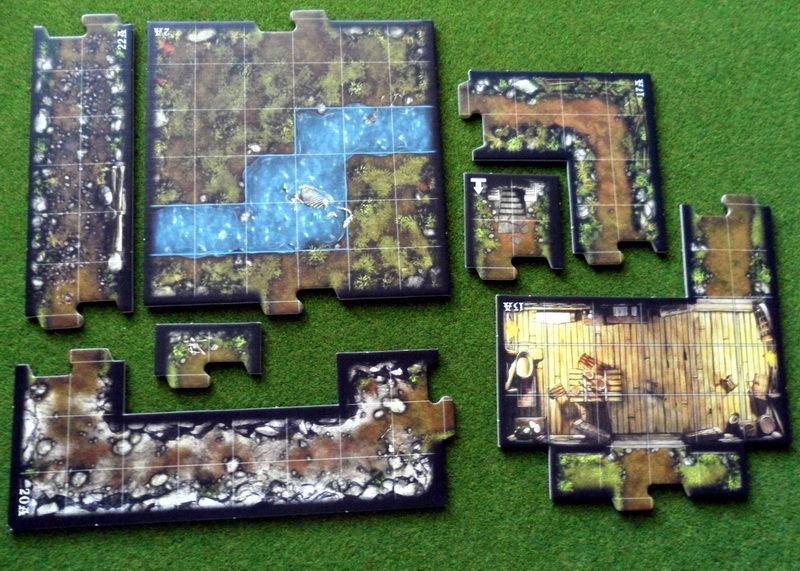

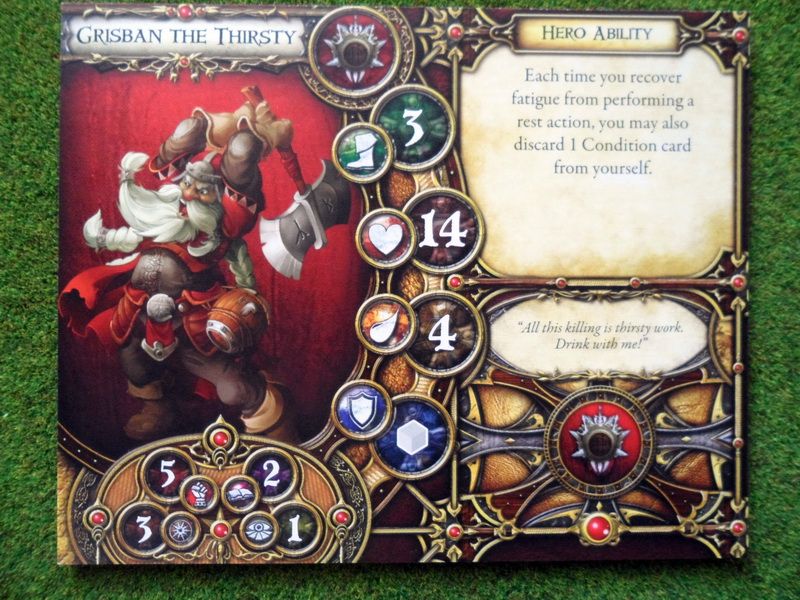

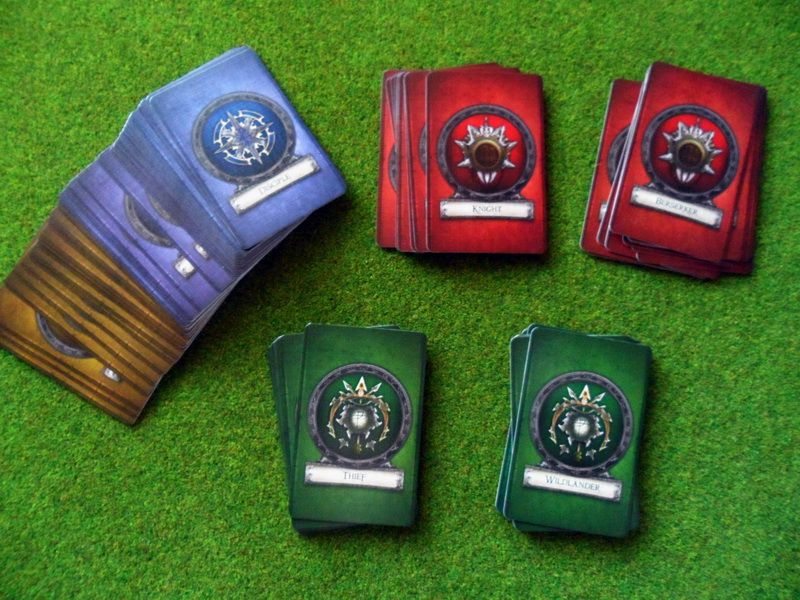
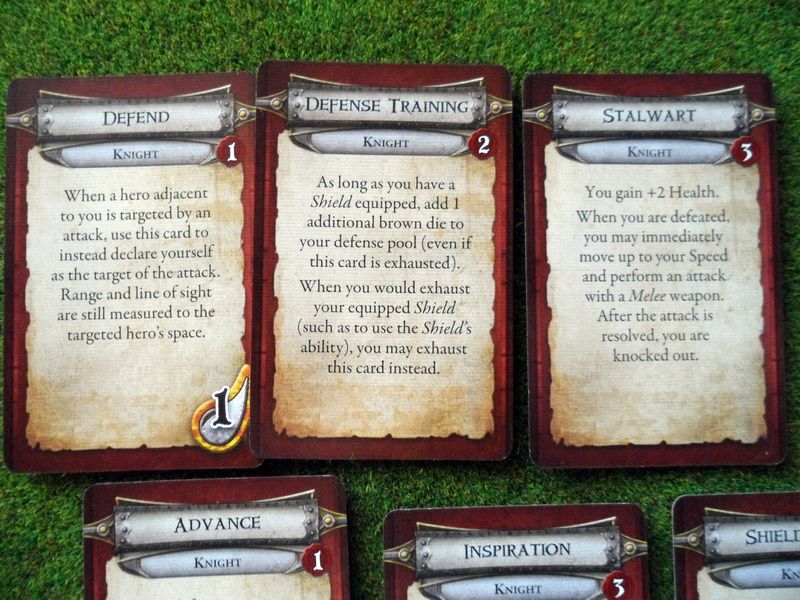

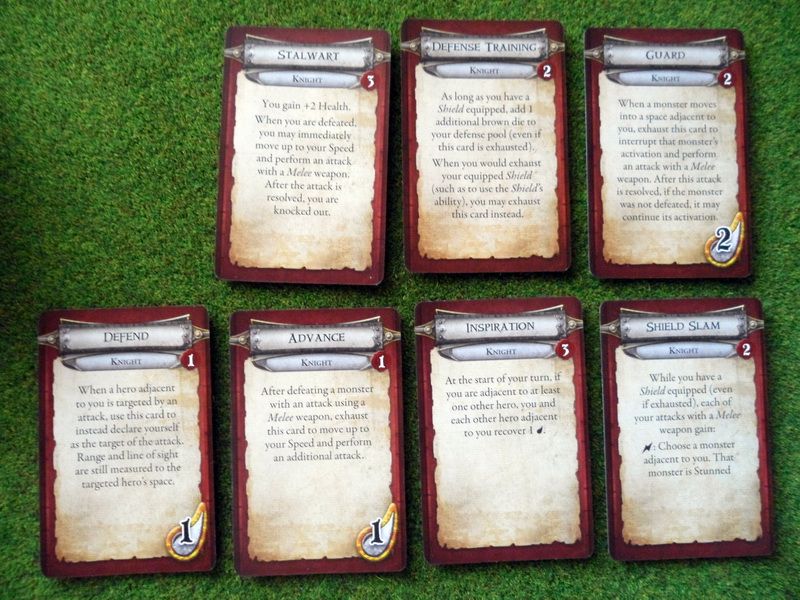






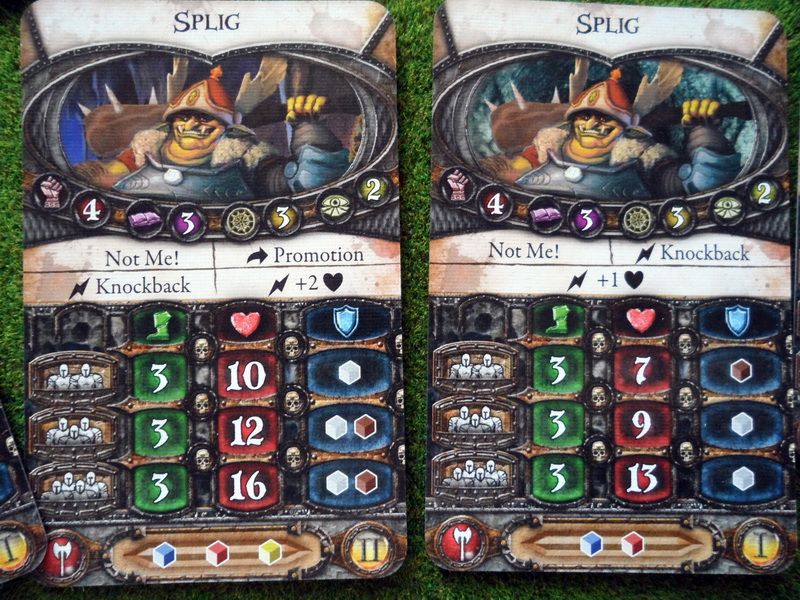
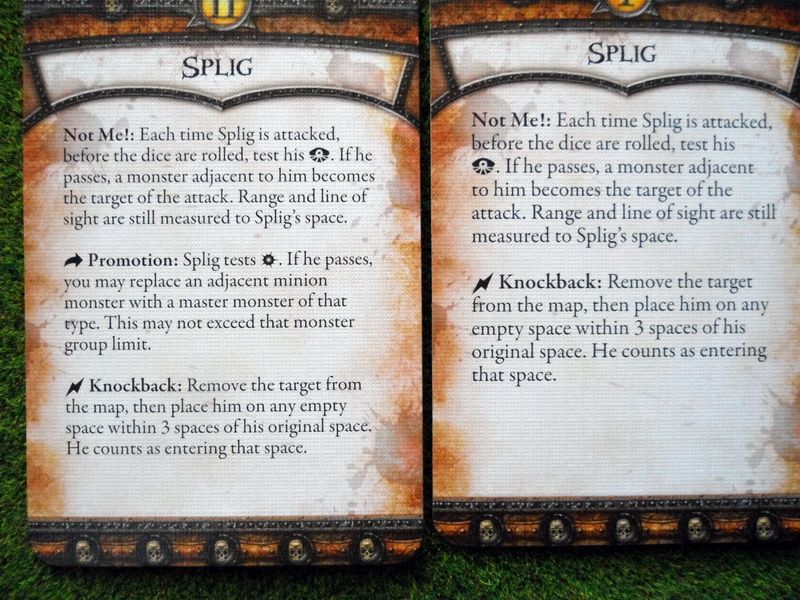
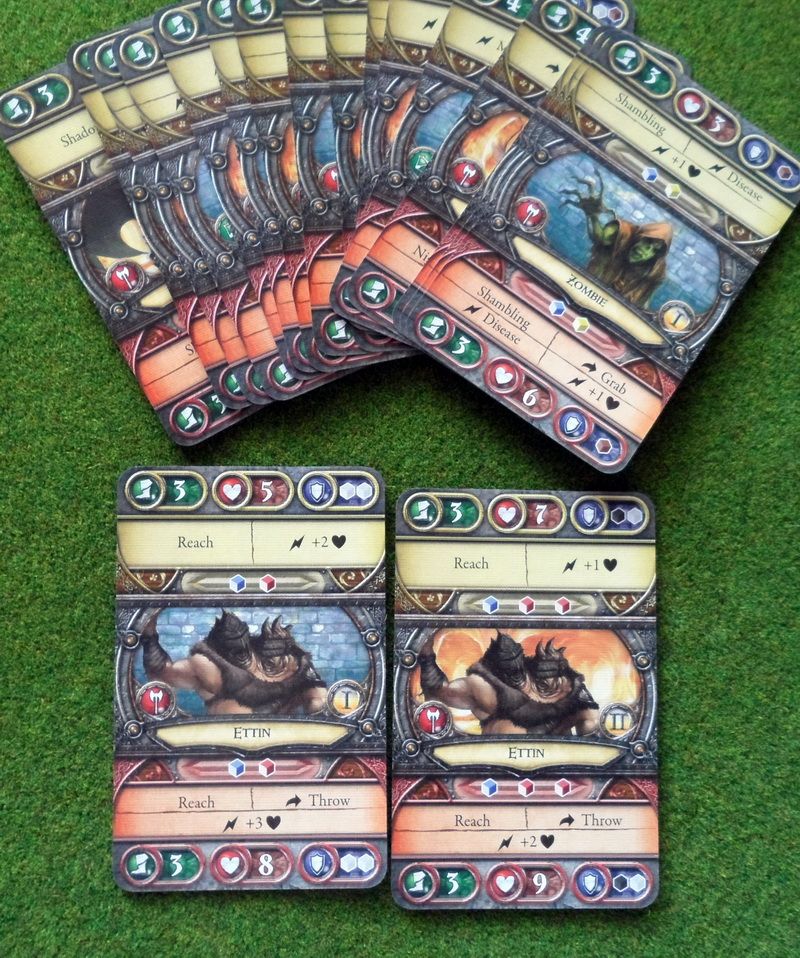
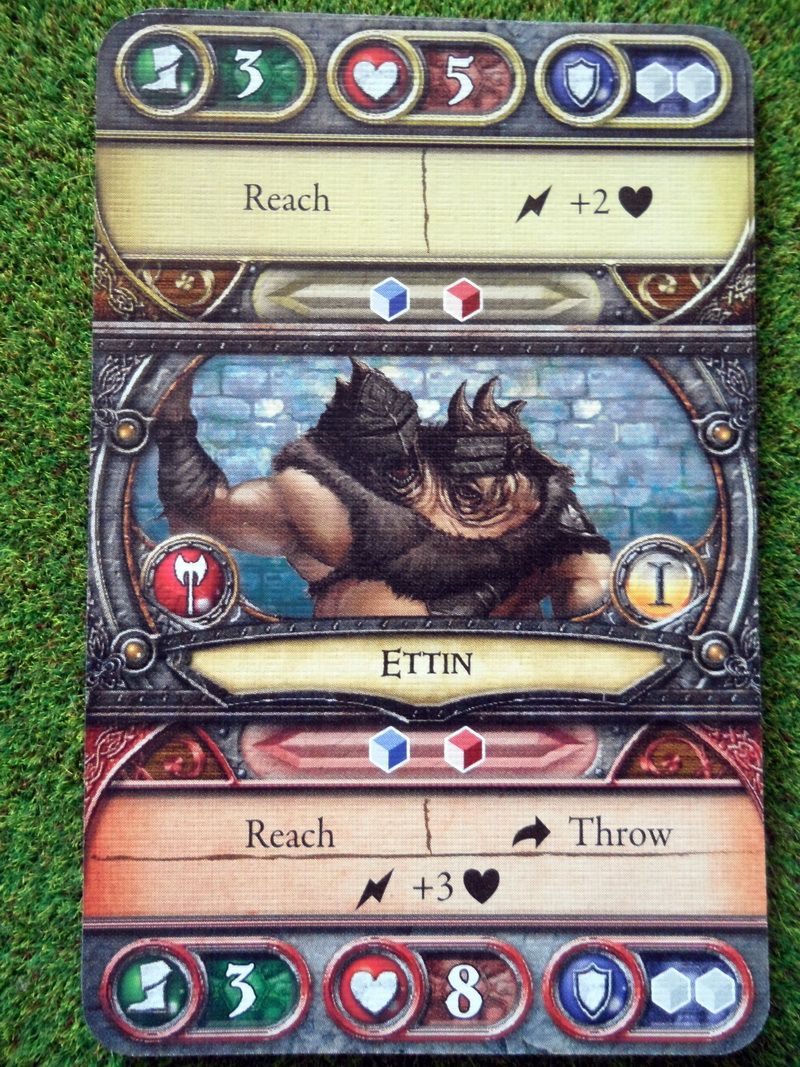


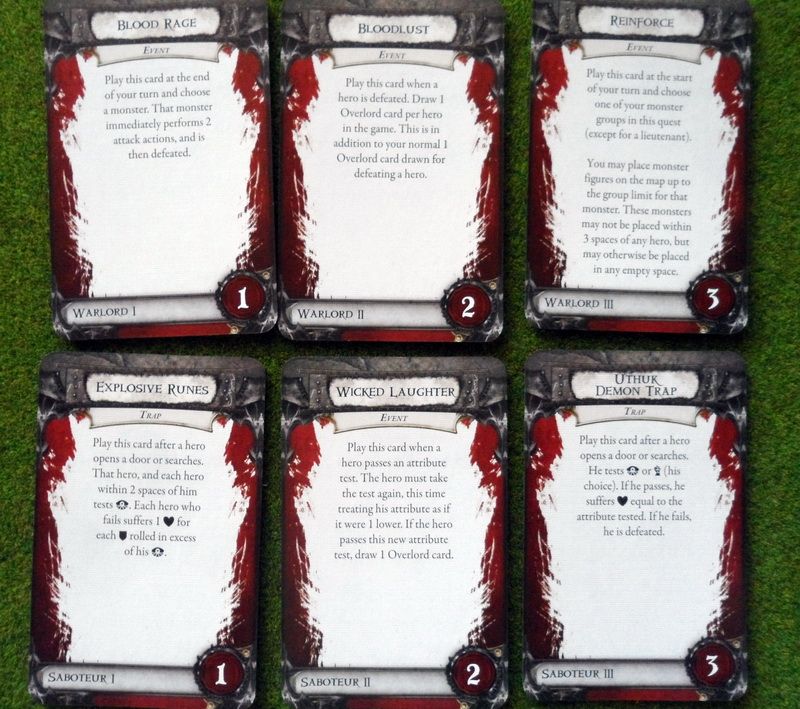


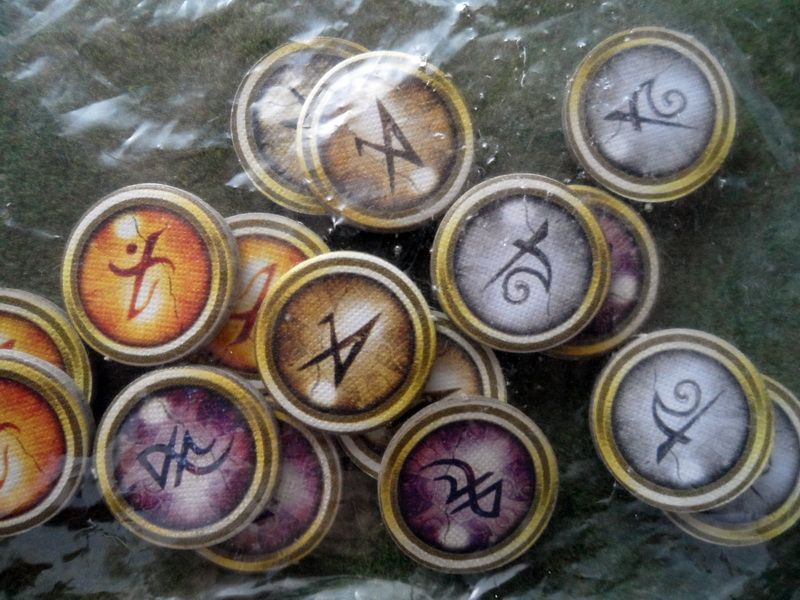
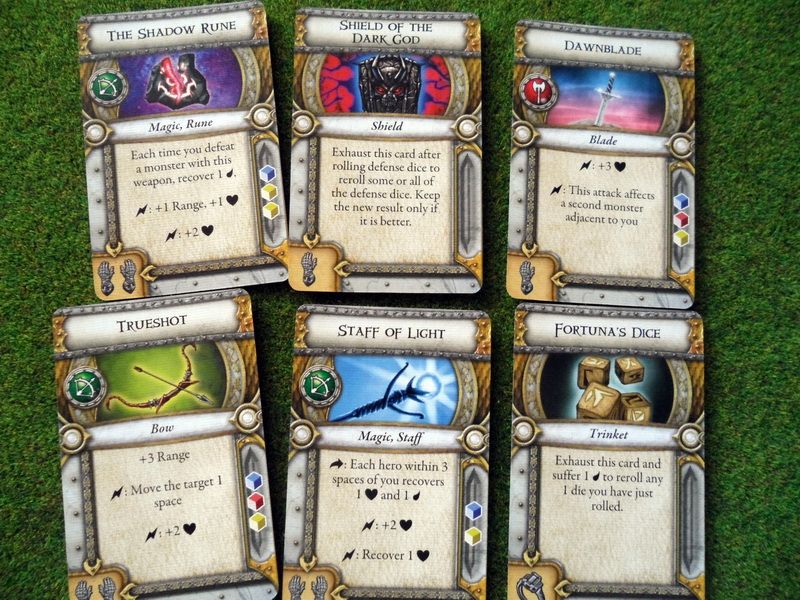

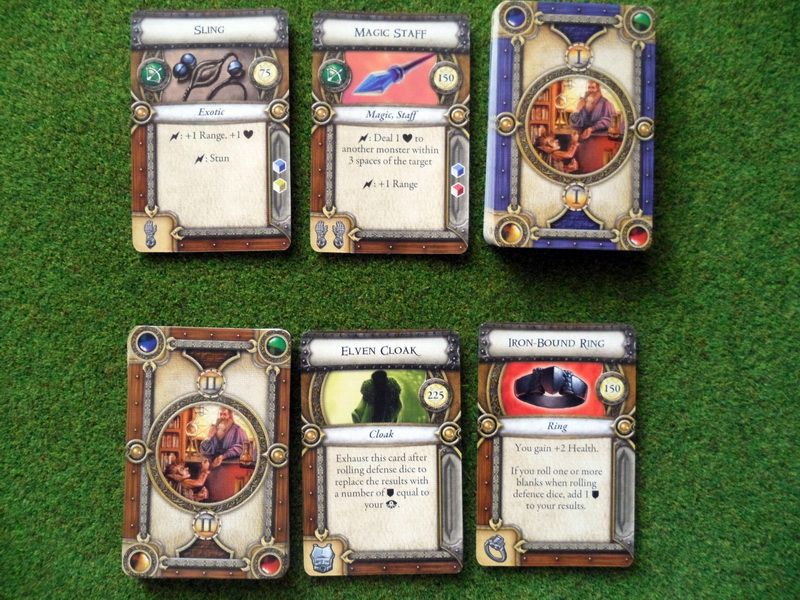
No comments:
Post a Comment